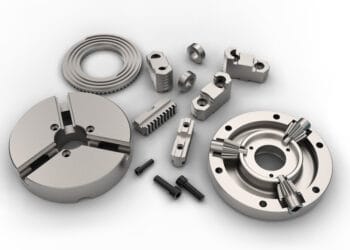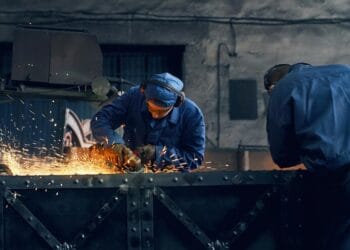Welcome to our blog on the top 10 common mistakes to steer clear of in CNC machining. Whether you’re a seasoned professional or just dipping your toes into the CNC waters, understanding and avoiding these blunders can make a world of difference in the success of your machining projects.
With its precision and efficiency, CNC machining has revolutionized the manufacturing industry. Yet, even the most experienced machinists can stumble into pitfalls that can lead to costly errors, wasted materials, and lost time. Let’s dive in.
#1 Lack of Proper Planning and Design
Effective planning is the cornerstone of successful CNC machining projects. Before diving into the machining process, it’s crucial to have a clear roadmap outlining the project’s objectives, requirements, and constraints.
Thorough planning ensures that all stakeholders are on the same page and helps make informed decisions throughout the project lifecycle. From material selection to toolpath generation, every aspect of CNC machining benefits from meticulous planning, ultimately leading to optimized results and minimized wastage of resources.
Common errors due to inadequate planning include:
- Incorrect material selection
- Inaccurate tolerances and dimensions
- Neglecting tooling requirements
- Poor fixture design
- Ignoring machining constraints
- Lack of prototyping
#2 Incorrect Tool Selection
Choosing the appropriate tools is crucial for achieving optimal results in CNC machining. The right tools not only ensure efficient material removal but also contribute to achieving the desired surface finish, dimensional accuracy, and overall part quality. Factors such as material type, cutting forces, tool geometry, and machining parameters all influence tool selection. By carefully evaluating these factors and selecting the right tools, machinists can enhance productivity, minimize tool wear, and reduce the risk of machining errors.
Mistakes in tool selection and their consequences include:
- Incorrect cutting speeds and feeds lead to tool wear and surface finish issues.
- Inadequate tool material causing premature tool failure or breakage.
- Improper tool geometry results in poor chip evacuation and dimensional inaccuracies.
- Neglecting appropriate tool coatings leads to friction and poor surface finish.
#3 Inadequate Machine Setup and Calibration
Proper machine setup and calibration are paramount in CNC machining to ensure accuracy, repeatability, and efficiency throughout the machining process. The initial setup establishes the foundation for all subsequent operations, affecting the quality of the finished parts. Calibration ensures the machine operates within specified tolerances and accurately translates programmed commands into precise tool movements. By investing time and attention into setup and calibration, machinists can minimize errors, reduce scrap rates, and maximize productivity in CNC machining operations.
Common errors include:
- Incorrect workpiece fixturing leads to dimensional inaccuracies.
- Misalignment of machine axes compromising part geometry.
- Inaccurate tool length offsets cause positioning errors.
- Improper spindle speed and feed rate settings result in tool wear.
#4 Ignoring Material Properties
Material properties play a crucial role in CNC machining as they directly influence cutting parameters, tool selection, and machining strategies. Factors such as hardness, ductility, thermal conductivity, and abrasiveness significantly affect how a material responds to machining processes. Machinists must comprehend these properties to optimize cutting conditions, minimize tool wear, and achieve desired surface finish and dimensional accuracy in CNC machining operations.
Mistakes include:
- Using inappropriate cutting parameters.
- Selecting incorrect tools for the material.
- Neglecting material-specific coolant/lubrication needs.
- Overlooking work holding considerations.
#5 Poor Programming Practices
Efficient CNC programming is essential for optimizing machining operations, minimizing cycle times, and ensuring consistent part quality. Well-written programs dictate tool movements, cutting parameters, and machining strategies, directly impacting productivity and accuracy.
Efficient programming streamlines workflows reduces setup times and enables machinists to leverage advanced machining techniques effectively. By investing in robust programming practices, manufacturers can enhance machining efficiency, reduce costs, and maintain a competitive edge in today’s fast-paced manufacturing landscape.
Common mistakes include:
- Inaccurate toolpath generation.
- Improper feeds and speed settings.
- Neglecting tool compensation.
- Inefficient G-code utilization.
#6 Neglecting Tool Maintenance
Regular maintenance of CNC machine tools is crucial for ensuring optimal performance, longevity, and reliability. Proper maintenance helps prevent premature wear and tear, reduces the risk of unexpected breakdowns, and ensures consistent machining accuracy and quality. By adhering to a routine maintenance schedule, machinists can prolong the lifespan of cutting tools, minimize production downtime, and ultimately, maximize return on investment in Custom CNC Parts.
Common errors include:
- Inadequate cleaning leads to chip buildup.
- Lack of lubrication causes increased friction and wear.
- Ignoring wear inspection results in dimensional inaccuracies.
- Incorrect storage causes corrosion and rust.
#7 Overlooking Safety Procedures
Ensuring safety in CNC machining environments is paramount to protect the well-being of operators, prevent accidents, and maintain a productive workplace. Prioritizing safety involves implementing comprehensive safety protocols, providing appropriate training, and enforcing adherence to safety guidelines. By fostering a culture of safety, organizations can minimize the risk of injuries, safeguard equipment, and promote a positive work environment conducive to efficiency and innovation.
Mistakes and consequences include:
- Lack of PPE leads to injuries from debris or coolant.
- Improper machine guarding causes crush injuries.
- Ignoring lockout/tagout leads to accidental startup.
- Inadequate hazard communication leads to chemical exposures.
#8 Inadequate Quality Control
Quality control is essential in a CNC machining shop to ensure that manufactured parts meet specified requirements and standards. By implementing rigorous quality control measures, manufacturers can identify and rectify defects, minimize variations in part dimensions, and maintain consistency in part quality. Effective quality control enhances customer satisfaction, reduces rework and scrap rates, and upholds the reputation of the manufacturing organization. Ultimately, prioritizing quality control in CNC machining operations fosters trust with customers and promotes long-term business success.
Mistakes include:
- Infrequent inspections lead to undetected defects.
- Use of inaccurate measurement techniques resulting in non-conforming parts.
- Skipping the first article inspection increases scrap rates.
- Inadequate documentation causes traceability issues.
#9 Lack of Operator Training and Skills
Trained and skilled operators are crucial for maximizing the efficiency, accuracy, and safety of CNC machining operations. Proper training ensures that operators understand machine functionalities, programming languages, and machining techniques. Skilled operators can effectively troubleshoot issues, optimize machining parameters, and minimize downtime, leading to increased productivity and reduced production costs. Investing in operator training not only enhances individual performance but also contributes to overall operational excellence and competitiveness in the manufacturing industry.
Errors from inadequate training include:
- Incorrect machine setup leads to dimensional inaccuracies.
- Mishandling tools cause breakage.
- Programming errors result in scrapped parts.
- Neglecting maintenance leads to breakdowns.
#10 Inaccurate Workpiece Measurement
Using measuring instruments incorrectly can lead to inaccurate measurements in CNC machining. This could involve techniques such as using the wrong type of measuring tool for the specific feature being measured, applying incorrect measurement methods, or misinterpreting measurement readings. Proper training and understanding of how to use measuring instruments accurately are essential to ensure reliable measurements in CNC machining processes.
Consequences of inaccurate measurements on part dimensions and quality:
- The quality of the finished product suffers, leading to customer dissatisfaction.
- A damaged reputation of the machining operation is possible.
- Inefficient use of materials and increased production costs occur.
Conclusion
In summary, avoiding common mistakes in CNC machining is crucial for achieving success. By addressing issues like inadequate planning, incorrect tool selection, and neglecting safety procedures, manufacturers can minimize errors, reduce costs, and maintain quality. Prioritizing continuous improvement, operator training, and robust quality control measures are essential for consistent success for a CNC machine shop. Learning from mistakes and implementing best practices helps unlock the full potential of CNC machining, ensuring competitiveness in the manufacturing industry.






























Discussion about this post